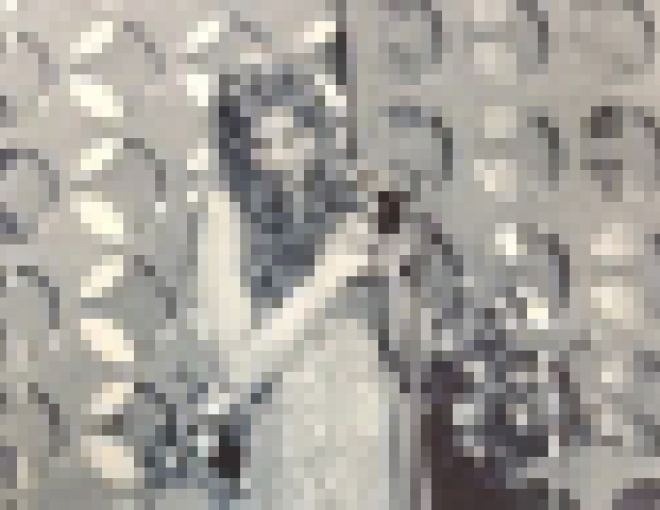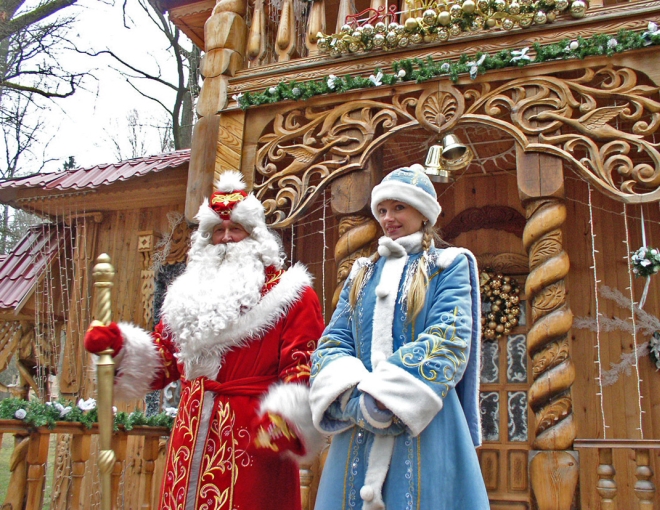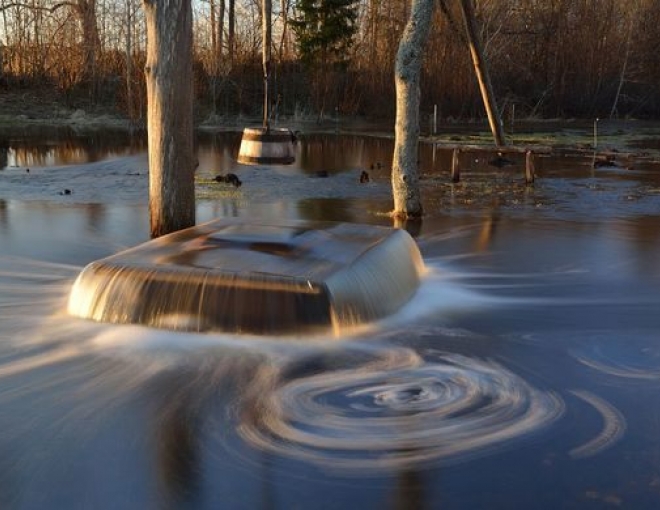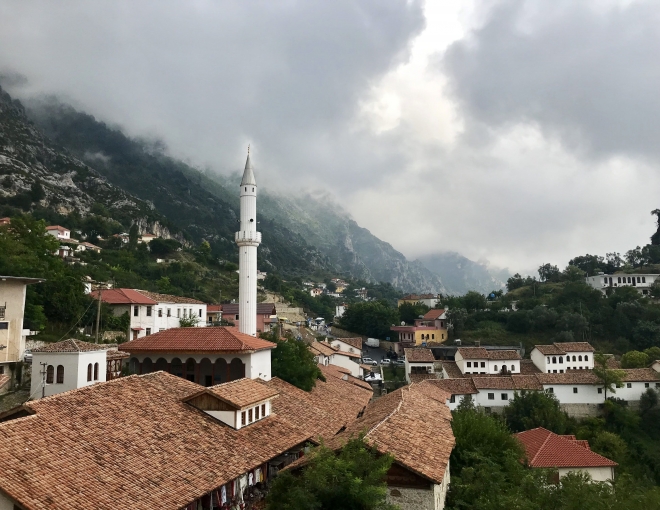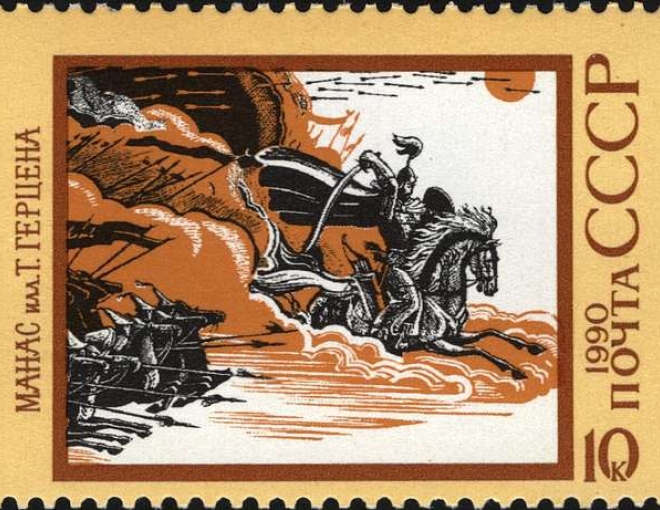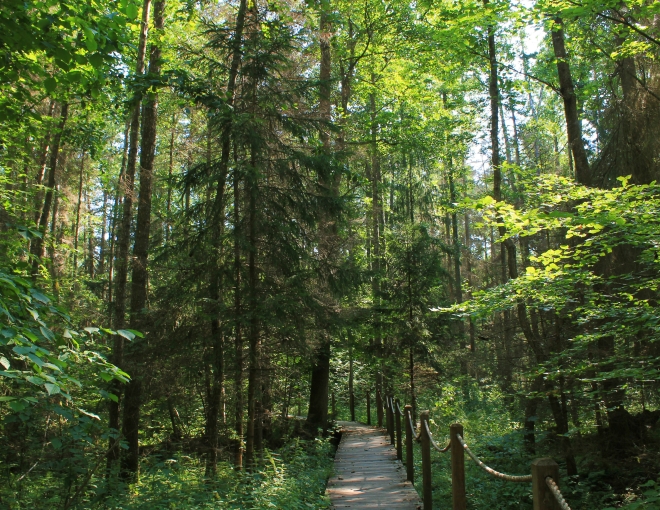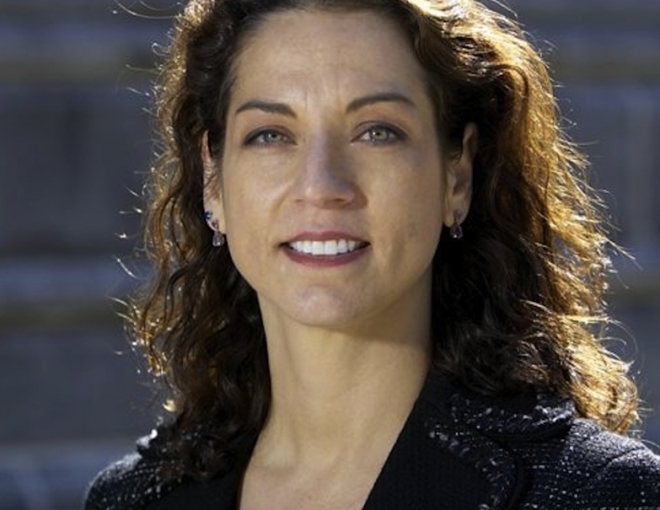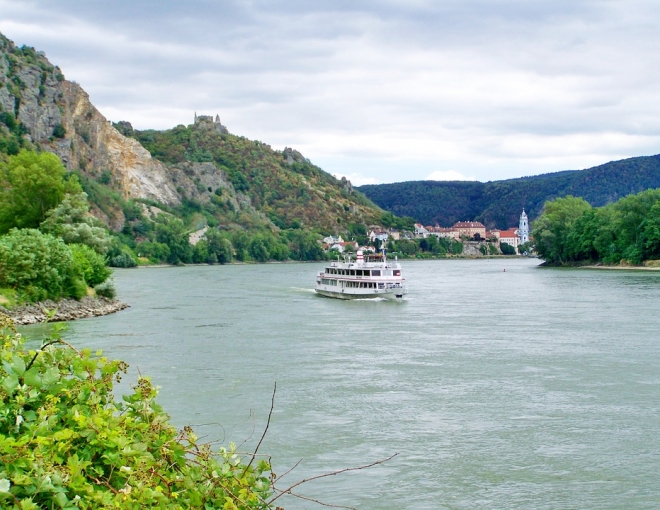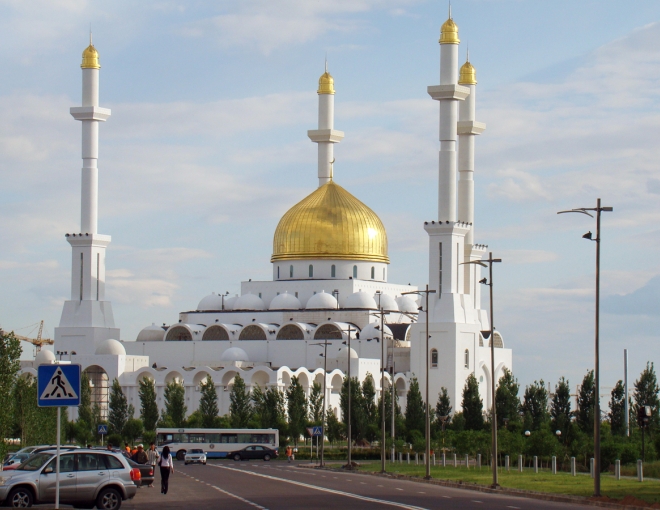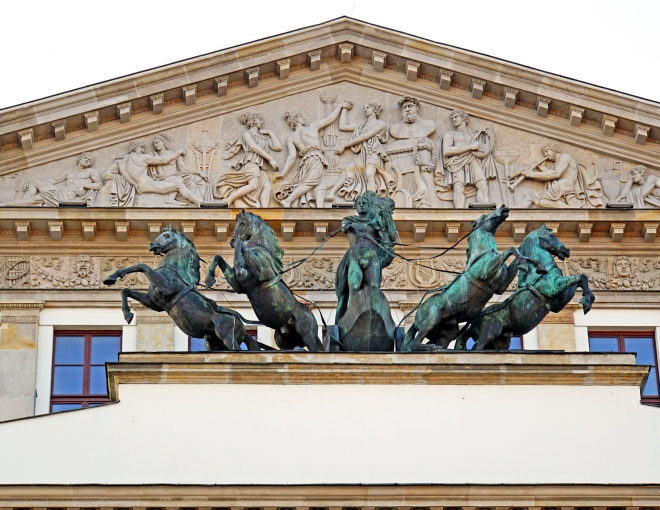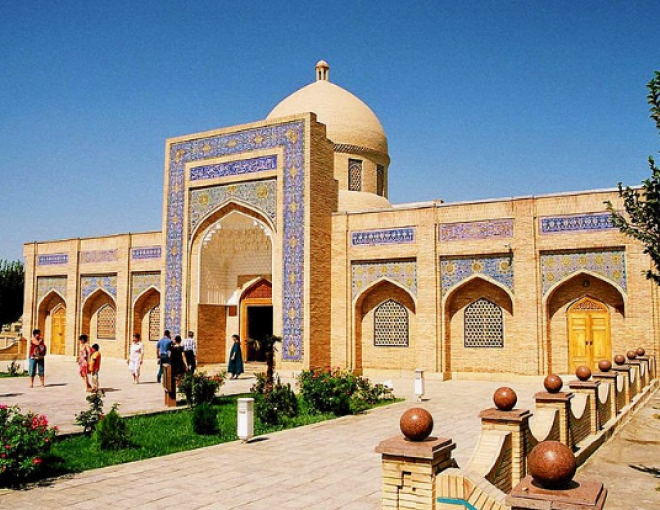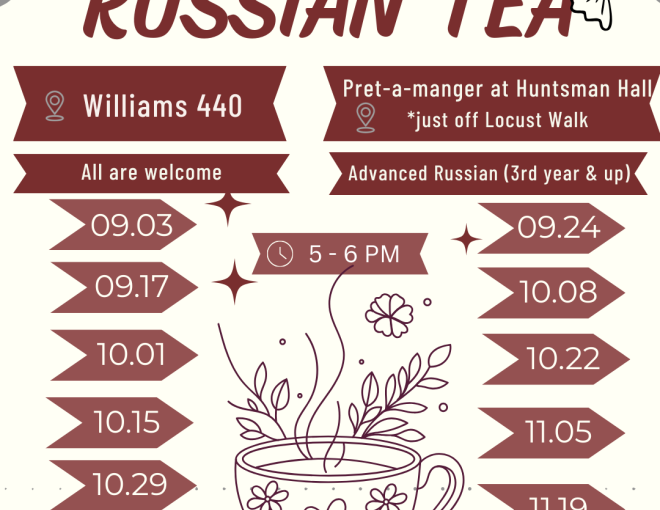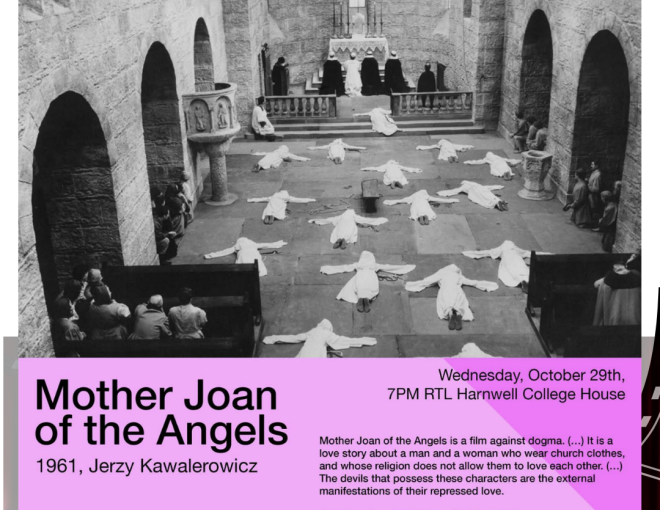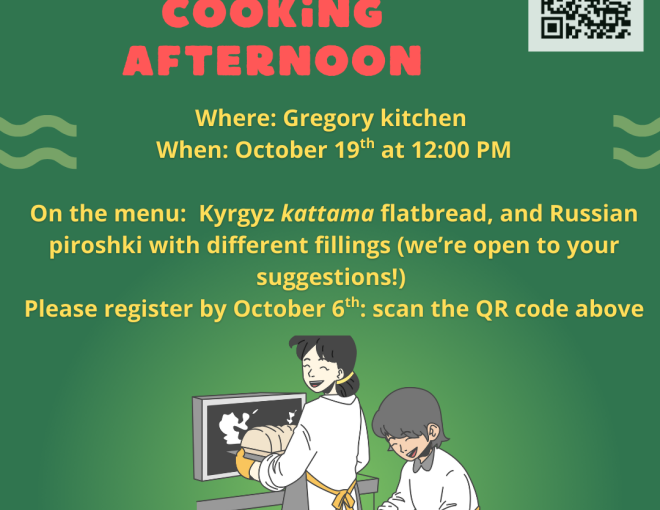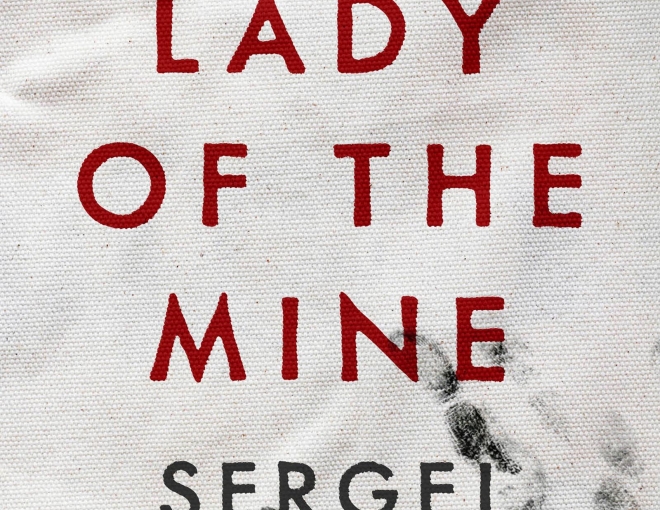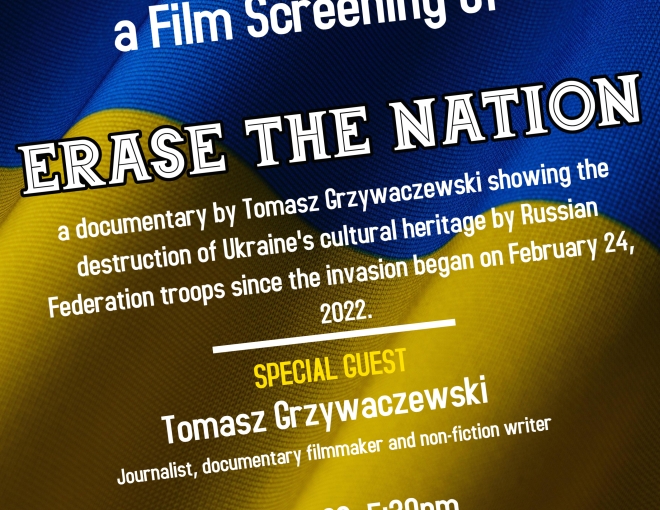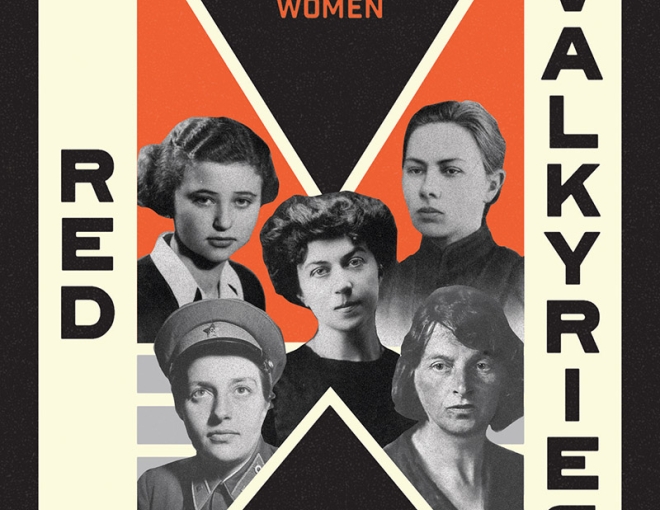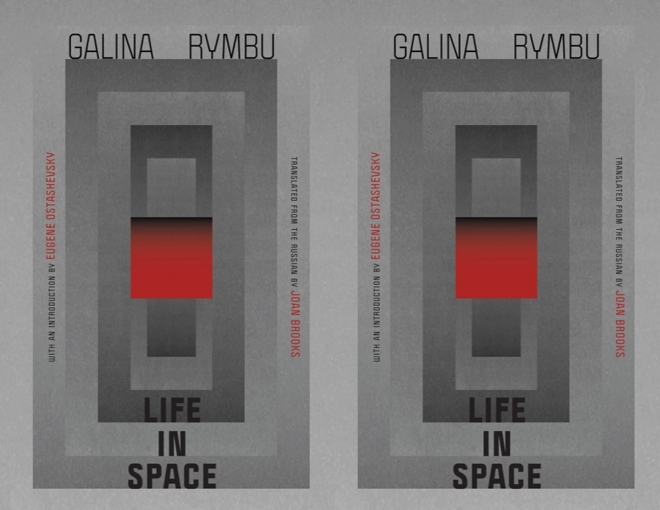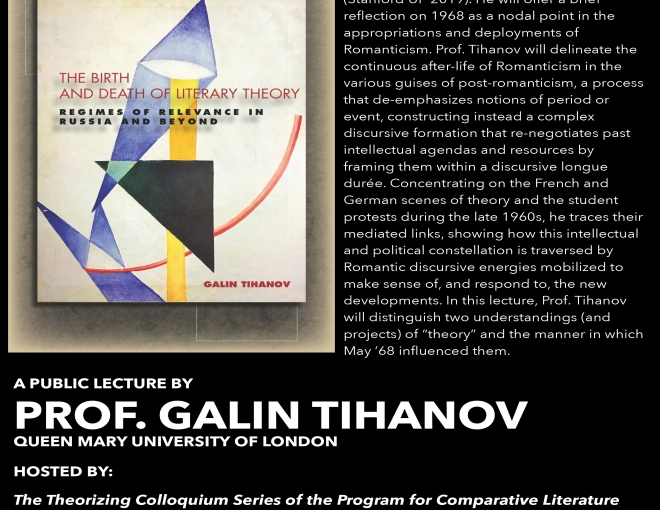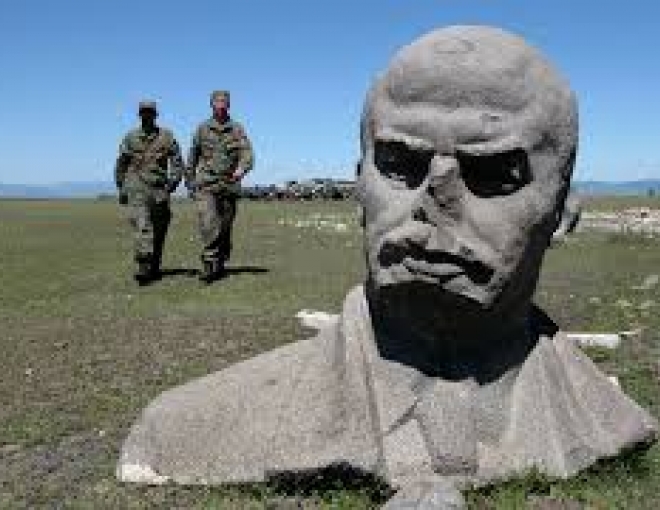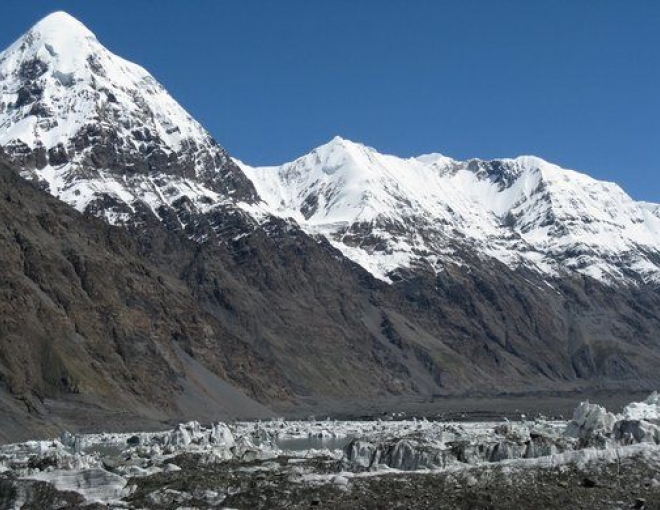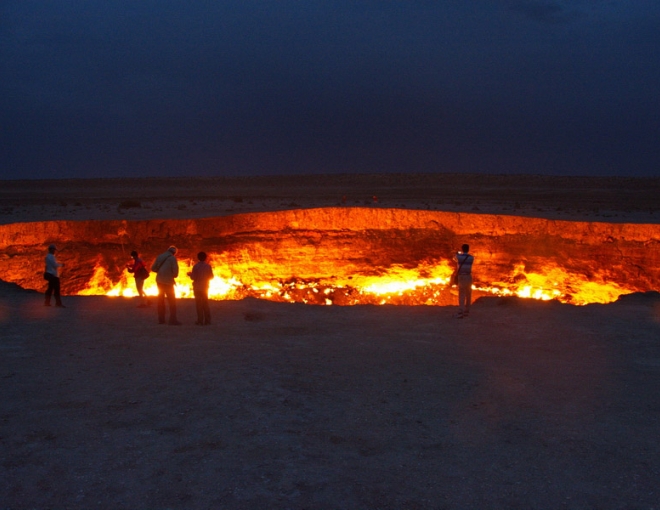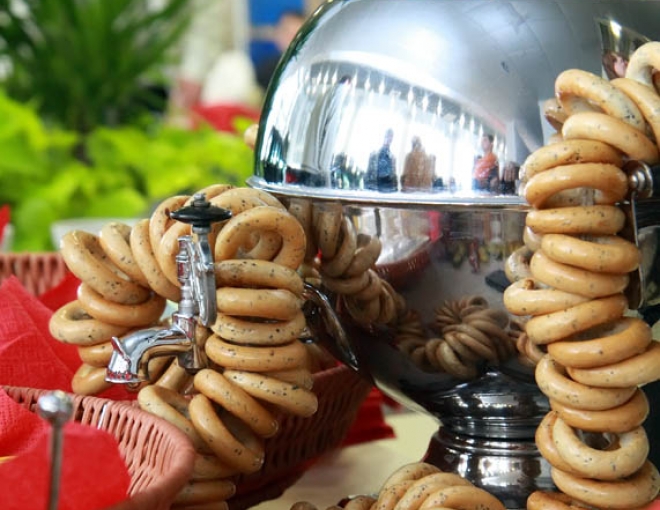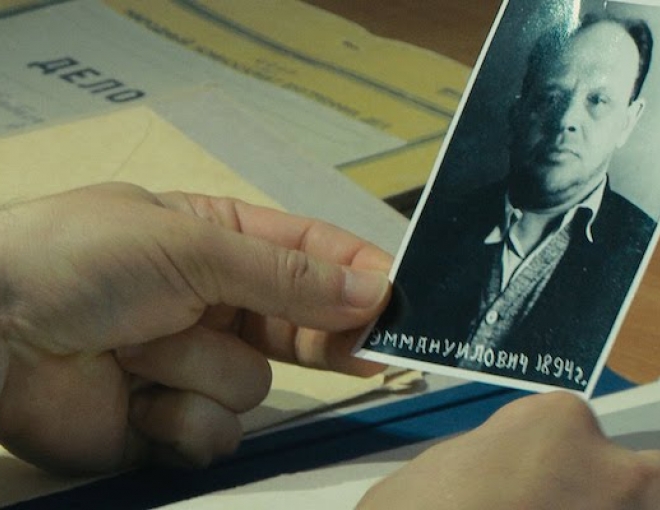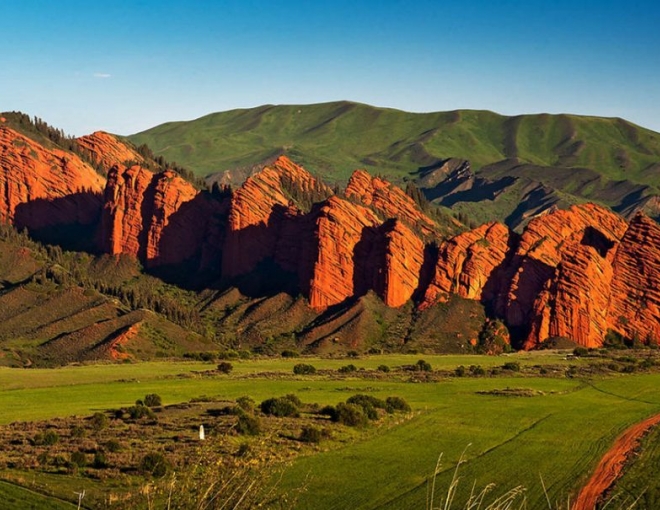Spotlight
-
Barbara Radziwiłł
The Medieval beauty etalon of Lithuania and Poland — Barbara Radziwiłł (Lithuanian: Barbora Radvilaite). As as Queen of Poland and Grand Duchess of Lithuania, she challenged the Medieval noms surrounding womanhood.
Image Source: Flickr
-
Faculty Profile: Kevin Platt
Kevin M. F. Platt is Professor of Russian and East European Studies at the University of Pennsylvania. Platt received his B.A. from Amherst College (1989) and his Ph.D.
-
Faculty Profile: Maria Alley
Dr. Maria Alley is the Russian Language Program Director at the Department of Russian and East European Studies. She was born and raised in Ukhta, a small town in the Komi Republic in Northern Russia. Maria received her Ph.D.
-
Monument to Grigory Kotovsky in front of the "Cosmos" hotel in Chișinău, Moldova
The Stalin-era monument of Grigory Kotovsky, who underwent a transformation from a Russian gangster and bank robber to a renowned Red Army general.
Image Source: Unsplash
License: Creative Commons 0
-
Perperikon, Bulgaria
Perperikon was once an ancient Thracian city located in the Eastern Rhodopes in the South of Bulgaria. Human activity in the area dates back to 5000 B.C. and is thought to be the location of the famous Temple of Dionysius, the ancient Greek god of wine, celebration and fun.
-
Anna German, a Soviet Popstar
Anna German was probably the most famous singer in the Soviet Union in the 1960s–1970s. Born in Poland, Anna German was not only known for her remarkable songs and beauty but also for her love for simple Slavic foods, such as boiled potatoes with herring, pickles, and black tea with lemon.
-
Astronaut Mosaic in St. Petersburg
The Soviet mosaic paying tribute to Yuri Gagarin’s legendary flight into space in St. Petersburg, Russia.
Image Source: Unsplash
License: Creative Commons 0
-
Street Art in Tallinn
Image Source: Eyes on the Streets
License: Permission granted by the author. The proof of the author's consent can be provided upon request.
-
Nokhur Cemetery, Turkmenistan
The cemetery of Nokhur, a village amidst stranded mountains in southern Tukrmenistan, contains tombstones decorated with mountain goat horns.
-
Saint Basil's Cathedral, Moscow, Russia
Our Logo Explained: Saint Basil's Cathedral
-
The Seven Bulls of Jeti-Oguz, Kyrgyzstan
Jeti-Oguz Canyon (Seven Bulls Rocks) is one of the most famous landmarks of Kyrgyzstan, made up of several impressive natural sandstone formations. It is featured in many poems and paintings, as well as music videos.
-
Harangház Bell House, Hungary
In the 1980s, a Hungarian artist Edit Oborzil and her husband Tibor Jeney filed a patent for a bell with a distinct sound that they had been perfecting for decades.
-
Froggyland, Split, Croatia
ABOUT THE COLLECTION
-
Chess City, Elista, Kalmykiya, Russia
Elista is the largest Buddhist city in all of Europe and lies in the steppes of southwestern Russia. The town is home to giant monasteries and Buddhist sculptures, as well as kings and queens - but not in the traditional sense.
-
A Soviet Dacha Home Museum, Moscow, Russia
Russian Tsars in the 17th century started to reward loyal landholders with small estates named “dachas” in the country, a word that translates from old Russian to "something given".
-
The Crooked Forest, Poland
Blending science fiction and ecological abnormality, a group of 400 trees in Poland’s Krzywy Las or “Crooked Forest,” are mysteriously bent. The trees strangely buckle out at 90 degrees and form an odd J-shape with a potbelly hovering just above the ground.
-
Independence Monument, Tashkent, Uzbekistan
The Independence Monument is located in the center of Tashkent city, on the Independence Square. During the Soviet time, the square was named Lenin Square and a monument of Lenin was erected in the middle of it.
-
Ships Graveyard, Moynaq, Uzbekistan
Moynaq used to be a bustling fishing community in Uzbekistan made up of tens of thousands of residents, but with the Aral Sea having dried up, the city has become a ghost town, also known as the ships graveyard.
-
Najmeddin Kubra Mausoleum, Uzbekistan
The Najmeddin Kubra Mausoleum is considered the holiest spot in Kunya-Urgench. Najmeddin Kubra was a famous Khorezm Muslim teacher and poet, as well as the founder of the Sufic Kubra order, from the 12-13th century.
-
Yzmykşir Fort, Turkmenistan
Remains of the Yzmykşir Galasy adobe-walled fort in the desert near Tashauz, Turkmenistan.
These days this fort is known more for the fact that in 1075 a Turkmen scientist, Mutazili theologian, Arabic philologist, and Quran exegete.
Photo credit: ©Annette Johnson 2018 -
Spotlight: Russian Monuments: The Other Kremlin
The "Kremlin in Izmailovo" is a cultural complex founded by Aleksandre Fedorovich Ushakov and Marina Viktorovna Alekseeva in 2003. It was established as a cultural center and marketplace mad in the image of traditional Russian architecture and fairytale depictions of Old Russia.
-
Velka Amerika, Czechia
Velka Amerika quarry is located outside the village of Mořina, Czech Republic. Formerly a center for calcium mining, what was once the refuse land of industry has now blossomed into a beautiful natural scenery.
-
Hotel Ještěd, Liberec, Czechia
Rising over 300 ft above the majestic Ještěd mountain, the Hotel Ještěd dominates the skyline of the Liberec region in the northern Czech Republic.
-
Vyshyvanka
Ukrainian embroidery have long been considered one of the strongest amulets. In different parts of the country, the patterns were different - they were unique and meant belonging to a certain region.
-
Tatlin's Tower
Our Logo Explained: Tatlin's Tower
-
'Zubr' stamp
The Soviet Union stamp from 1969 featuring European bison or 'Zubr' in Białowieża Forest. In the 20s of the 20th century, the bison was endangered. Now, thanks to conservation efforts, there are 8,461 bison in the world, most in Poland (2269), Belarus (2101) and Russia (1588).
-
The Tzar's Hunt
The Tzar's hunt in Białowieża Forest in 1894. Białowieża Forest is a vast woodland area located on the border between Poland and Belarus. In 1888, the Białowieża Forest was acquired by the royal family in return for lands in the Orel and Simbirsk provinces.
-
Ded Moroz
The estate of the Belarusian 'Ded Moroz' [Grandpa Frost] is located in the Białowieża Forest National Park in Belarus. Approximately 150,000 tourists visit the residence of the Belarusian Grandpa Frost each year.
-
Ukrainian Khata
Ukrainian Khata, 1880 by Ilya Yefimovich Repin Ukrainian-born Russian painter.
-
The St. Michael's Golden-Domed Monastery in Kyiv
Ukrainian Baroque, also referred to as Cossack Baroque, is an architectural style that was prevalent in Ukrainian regions during the 17th and 18th centuries. The St. Michael's Golden-Domed Monastery in Kyiv is a prime example of Ukrainian Baroque architecture.
-
The Akhmad Kadyrov Mosque
Our Logo Explained: The Akhmad Kadyrov Mosque
-
Kamianets-Podilsky Fortress
Kamianets-Podilsky Fortress is a fortress in the city of Kamianets-Podilskyi. Due to the castle's distinctive position on a peninsula, the castle bridge is the sole connection to the city's Old Town area. It is regarded as a significant achievement in medieval engineering.
-
Baikal
Baikal is a lake of tectonic origin in the southern part of Eastern Siberia, Russia with an area of 31,722 km²(12247miles²), the deepest lake on the planet, the largest natural reservoir of fresh water and the largest freshwater lake in Eurasia by area.
-
Temple of All Religions, Kazan', Tatarstan, Russia
Located in the Russian city of Kazan, the colorful Temple of All Religions, or Universal Temple is a mish-mash of architectural flourishes culled from most of the major world religions to create an uber-complex where all religions can come together in harmony.
-
Klyuchevskaya Sopka
Klyuchevskaya Sopka is an active stratovolcano in the east of the Kamchatka Peninsula, Russia. The highest active volcano in Eurasia. It is approximately 7,000 years old. Its height varies from 4,688 to 4,750 meters and higher above sea level.
-
The Lena Pillars National Park
The Lena Pillars National Park is a geological formation and a national park of the same name in Yakutia on the banks of the Lena River.
-
Wrangel Island Stamp
Wrangel Island is located in the Arctic Ocean at a distance of about 150 miles from the mainland. Crossed by the 180th meridian, it is located in both the western and eastern hemispheres at the same time.
-
Onekotan Island
Onekotan is a large volcanic island in the northern group of the Greater Kuril Islands. (Anakutan; from Ainu. Onne kotan: onne — "old, honorable, valuable, large", kotan — "village, estate, dwelling; city, town, small town")
-
The Laboratory Mouse Monument
The Laboratory Mouse Monument is a monument in the Novosibirsk Akademgorodok, located in the park near the Institute of Cytology and Genetics of the Siberian Branch of the Russian Academy of Sciences.
-
Dargavs Village: City of the Dead, North Ossetia
Reaching this mystifying destination requires a three-hour drive, taking you down a dangerous and hidden road befitting a journey to the City of the Dead.
-
Svetlana Alexievich
Svetlana Aleksandrovna Alexievich is a Belarusian writer, journalist, and documentary screenwriter. The first Belarusian and sixth Russian-language laureate of the Nobel Prize in Literature (2015).
-
Olga Tokarczuk
Olga Nawoja Tokarczuk is a Polish writer and poet. Winner of the Man Booker International Prize (2018) and the Nobel Prize in Literature (2018, awarded in 2019). Tokarczuk was born in Sulechów. One of her grandmothers was Ukrainian.
-
Wisława Szymborska
Wisława Szymborska was a Polish poet; winner of the 1996 Nobel Prize in Literature. She lived in Kraków from 1931. From 1943 she worked on the railway, and managed to avoid being sent to forced labor by the Nazis.
-
Pysanky
Pysanka is a Ukrainian variety of Easter eggs; an egg decorated with traditional symbols written using wax and dyes.
-
Seven Rila Lakes, Bulgaria
The Seven Rila Lakes are a group of glacial lakes in the northwestern Rila Mountains in the Southwest of Bulgaria. The lakes are situated between 2,100 and 2,500 metres elevation above sea level. Each lake carries a name associated with its most characteristic feature.
-
Lama Itigilov, Ivolgin Datsan, Buryatiya, Russia
A New York Times article by By STEVEN LEE MYERSOCT. 1, 2002 (http://www.nytimes.com/2002/10/01/world/ivolginsk-journal-a-russian-lama...)
-
Charyn Canyon
Charyn Canyon is a 154 km long canyon along the Charyn River in Kazakhstan. The canyon is located 195 km east of Almaty. It is located on the territory of three districts of Almaty region: Uyghur, Raiymbek, Enbekshikazakh.
-
Lake Kaindy
Kaindy is a landslide lake in the Almaty region of Kazakhstan, a popular tourist destination in one of the gorges of the Kungey Alatau. The main attraction of the lake is the spruce trees rising straight out of the water.
-
Castle of Childhood, Moscow, Russia
For a hundred and fifty fortunate preschoolers in Moscow, Russia, every working day is a fairy tale.
-
Altyn-Emel National Park
The most famous attractions of Altyn-Emel National Park are the Singing Dune, 1.5 km long and up to 130 m high; clay mountains cut by canyons - Aktau (translated as white mountains); Katutau - mountains made up of volcanic rocks; the Chokan Valikhanov spring in the Kokbastau tract.
-
Tuhala Witch's Well, Estonia
Located in the tiny village of Tuhala, the Witch’s Well is a naturally occurring geyser that has been known to flood the entire area after heavy rains. Clearly the work of witches.
-
Tilla-Kori Madrassah, Uzbekistan
The Tilla Kori was built on the north side of the Registan Square in Samarkand, between 1646 and 1660. Yalangtush Bakhadur, the ruler of Samarkand at that time, ordered the Tilla Kori's construction but died before it was completed.
-
Krujë, Albania
A beautiful stormy landscape of Krujë, Albania
Photography by Graham Pritchard
https://www.flickr.com/photos/155719183@N05/
-
A Soviet Era Mosaic Mural, Bishkek, Kyrgyzstan
A beautiful, Soviet-era mosaic in Bishkek, Kyrgyzstan
Photography: Graham Pritchard
https://www.flickr.com/people/155719183@N05/ -
The Last Wild Apple Forests, Kazakhstan
It might seem strange to think that the common apple was not originally a universal fruit, but in fact it has its roots in one specific region of the world. The ancestor of the domestic apple is the Malus sieversii, which grows wild in the Tian Shan mountains of Kazakhstan.
-
Freedom Monument in Riga, Latvia
The monument commemorates the Latvian War of Independence of 1918-1920. Soviet sculptor Vera Mukhina was responsible for saving this sculpture from demolition during the Stalinist era.
Image source: Wikimedia
License: Creative Commons 0
-
Yard Gallery in Kaunas, Lithuania
The Yard Gallery turned the exterior of the neglected apartment building into a space for art and history to unite. The open-air gallery houses contemporary art installations and murals commemorating the Jewish residents who lived in the house before the Holocaust.
-
Palace of Culture and Science in Warsaw, Poland
The grand Palace of Culture and Science in Warsaw, Poland, was built in 1955 as a “gift of the Soviet people for the Poles” by Joseph Stalin.
Image source: Unsplash
Lisense: Creative Commons 0
-
Tash Rabat, Kyrgyzstan
Today, we picture the caravans traveling along the Silk Road from China to the Middle East as a rather romantic image.
-
Kaindy Lake, Kazakhstan
Kaindy Lake is an idyllic mountain lake in Kazakhstan’s portion of the Tian Shan Mountains, close to the country’s largest city, Almaty. The lake was formed after an earthquake in 1911, which caused a major landslide, effectively creating a natural dam.
-
Kyrgyz yurt
Yurt (also obsolete "kibitka") is a portable frame dwelling with a felt covering among Turkic and Mongolian nomads.
-
Ala-kiyiz in making
Ala kiyiz, or tekemet, is a decorative style used for textile floor or wall coverings created by pressing together wet, soaped wool in various colors to form felt.
-
Motherland Monument in Kyiv
The Motheland Monument in Kyiv, locally known as "Brezhnev's daughter"
Image Source: Unsplash
License: Commercial Commons 0
-
Manas, Kyrgyz epic poem
The Epic of Manas is a heroic epic of the Kyrgyz people. The main content of the epic is the exploits of the hero Manas.
-
Kyrgyz som
Som is the currency of the Kyrgyz Republic. Kyrgyzstan was one of the first countries of the former USSR (and the first in post-Soviet Central Asia) to approve its own national currency.
-
Salina Turda Theme Park, Romania
With over 2,000 years of history, highly preserved galleries, and a futuristic underground attraction, Salina Turda is the largest salt mine museum in the world, and easily the most incredible.
-
Puszcza Białowieska
The Soviet Union stamp from 1969 featuring European bison or 'Zubr' in Białowieża Forest. In the 20s of the 20th century, the bison was endangered. Now, thanks to conservation efforts, there are 8,461 bison in the world, most in Poland (2269), Belarus (2101) and Russia (1588).
-
Tian Shan Mountains, Kyrgyzstan
Tian Shan Mountains, Kyrgyzstan
-
Faculty Profile: Julia Verkholantsev
Associate Professor and Undergraduate Chair
FOUNDING DIRECTOR, PROGRAM IN GLOBAL MEDIEVAL & RENAISSANCE STUDIES
Ph.D. University of California, Los Angeles, Slavic Languages and Literatures
M.A. Hebrew University of Jerusalem, (Indo-European) Linguistics -
Buzludzha Monument
Our Logo Explained: Buzludzha Monument
-
Faculty Profile: Maria Bourlatskaya
MARIA BOURLATSKAYA has been with the Department of Slavic Languages and Literatures since 1992.
-
Faculty Profile: Mila Nazyrova
Mila Nazyrova has been teaching Russian language and culture courses since 2001. She teaches a broad variety of Russian language courses as well as courses for heritage speakers and intensive language courses.
-
Faculty Profile: Molly Peeney
Dr. Peeney earned her Ph.D. in Slavic Languages and Literatures from the University of Wisconsin-Madison in 2010. Her dissertation analyzes Vladimir Nabokov’s Russian novels as polemical responses to Soviet literary trends of the twenties and thirties.
-
Spotlight: Kristen Ghodsee
Kristen Ghodsee earned her Ph.D. at UC Berkeley and is a Professor of Russian and East European Studies at the University of Pennsylvania. Her research interests include the gendered effects of post-Cold War transformations and the ethnographic study of memory and nostalgia in Eastern Europe.
-
Alex Vekker, a Specialist on Soviet and Post-Soviet Economy
Alex Vekker is a specialist in Soviet economics and economic consulting. He has his own business, Vekker Consulting, which provides expert witness and economic and statistical consulting services.
-
Moscow Kremlin
The Kremlin is a fortified complex in the center of Moscow, overlooking the Moskva River to the south, Saint Basil's Cathedral and Red Square to the east, and the Alexander Garden to the west.
-
Danube River
The Danube is Europe's second longest river, after the Volga. It is located in Central and Eastern Europe, flowing through 10 countries.
-
Alexander Pushkin
Alexander Pushkin(1799-1837) is considered by most to be Russia's greatest poet. Pushkin, the Russian national poet, is famously descended from an African slave.
-
Nur Astana Mosque, Astana, Kazakhstan
The Nur-Astana Mosque (Kazakh: Нұр-Астана мешіті, Nur-Astana meşiti), is a mosque located in the city of Astana, the capital of Kazakhstan. It is third largest mosque in Central Asia.
-
Grand Theatre, Warsaw, Poland
The Grand Theatre was originally inaugurated in 1833, after eight years of construction led by architect Antonio Corazzi.
-
Baikal Lake, Russia
Lake Baikal is the world’s oldest and deepest freshwater lake, situated in the mountainous region of Siberia north of the Mongolian border. It trails for nearly 400 miles and its average depth is 744.4m (2,442 ft), while its maximum depth is 1,741m (5,712 ft).
-
Kamchatka Peninsula, Russia
There are few places in the world that can enthrall quite like Kamchatka, easily Russia's most scenically dramatic region. A vast volcanic peninsula that is almost entirely wilderness, Kamchatka is a place of extraordinary primal beauty, rushing rivers, hot springs and snow-capped peaks.
-
Bahouddin Naqshband Memorial, Uzbekistan
The architectural ensemble of Bahouddin, located kilometers north-east of Bukhara, in the old village Qasr-i Arifan arose from the mazar of this sufi. He had been forming for five hundred years, but it is known very little about its early history.?
-
Korcula Island, Croatia
The sixth largest island in Croatia, Korcula is 20 miles long and rather narrow, between 4 and 5 miles wide on average. This island is known for its dense forest and the ancient Greeks called the island Black Korcula (Kerkyra melaina) for this reason.
-
Plovdiv, Bulgaria
Plovdiv is Bulgaria’s second-largest city and has been recognized as one of the oldest settlements in Europe, with evidence of habitation reaching as far back as the 6th millennium BC.
-
Vokiečių Street
One of the oldest streets in the Old Town of Vilnius; mentioned in written sources since 1576. In the 15th-16th centuries, it was one of the most beautiful and main streets of the city with stone two- and three-story houses.
-
Stelmužė Oak - One of the oldest oak in Europe
One of the oldest oaks in Europe, the oldest oak in the Baltic. Encyclopedic sources give different estimates of its age: 2000-1500 years. An exact age determination is extremely difficult because the core of the trunk has rotted and been removed.
-
LNK Infotree
The French Geographical Institute once established that one of the centers of Europe is located in Lithuania — a 20-minute drive from Vilnius. It is designated by a special park included in the top 50 most interesting places in the world of art.
-
Basarbovo Monastery
The Monastery of Saint Dimitar Basarbowski is a Bulgarian Orthodox cave monastery located near the city of Ruse in northeastern Bulgaria. It is the only active cave monastery in modern Bulgarian history and was designated a historical landmark in 1978.
-
Bulgarian literary figures with Jules Romains
Bulgarian literature is the oldest of the Slavic literatures, having emerged in 886 with the establishment of the Preslav Literary School. On the photo Bulgarian writers, poets, literary critics and public figures, gathered on the occasion of Jules Romains' visit to Bulgaria.
-
Kukeri
Kukeri (Bulgarian: кукери; singular: kuker, кукер) are Bulgarian men dressed in elaborate costumes who perform traditional rituals aimed at driving away evil spirits. Similar customs can be found throughout the Balkans and Greece, including Romania and the Pontus.
Archived Spotlight
-
Russian Tea
Russian Tea
-
Poets Who Translate: An Evening with Ivan Sokolov, Ron Silliman, and Sara Gilmore
Co-sponsored by Comparative Literatures Program and Russian & East European Studies Department.
-
Russian - Kyrgyz Cooking Afternoon
Registration required.
-
ReArming Europe: The Emergence of European Strategic Autonomy?
October 16, 5pm
-
Russia - Ukraine War: Misconceptions and Prospects for Peace?
All are welcome.
-
Russian Placement Exam
Russian Placement Exam
-
Sad News
In honor of the passing of our dear colleague, Professor Emeritus Peter Steiner, we request contributions to a Peter
-
REES Film Series: Werkmeister Harmonies
September 25, 7pm, Harnwell House RTL
-
Women as Sexual Beings Under Communism
How the State Interest in Reproduction Inspired Research on the Female Orgasm and How the Pro-Family Policies Fueled Divorce
December 11, 2023, 5:30pm
-
Russian Policy Towards Belarus after 2020: At a Turning Point?
November 8, 3:30pm, Claire Fagin Hall Auditorium
-
REES Majors and More Dinner
RSVP by October 11.
-
The Baltic Gothic and the Russian Imperial Imagination
REEES Working Group and Penn REES Colloquium present:
Valeria Sobol
Slavic Department, University of Illinois
-
REEESne 2023
REEESNe 2023 Student Conference and Slavic Bazaar
-
Open Mic Party
A party to celebrate the end of the Fall semester with food, singing, dancing, and other fun activities.
-
Slavic Bazaar
April 15 in Max Kade Center at Penn
-
Poland's Constitutional Breakdown, a Book Talk
April 1, 2022, 12pm - postponed from February 25
-
Kentomania: A Black Basketball Virtuoso in Communist Poland
The Polish Heritage Speakers Class and The Polish Club at UPenn are organizing a Zoom Talk with Kent Washington based on his recently published memoir. Register HERE
-
Yellow Star, Red Star: Holocaust Remembrance After Communism
March 18, 12noon
-
Info Session on Russia's Invasion of Ukraine
February 25, 2022, 12pm, Perry World House
-
Cold War or Cold Peace? Russia, America, & the New World Disorder
December 1, 5pm, College Hall 200
-
Слухи, байки и фейки о коронавирусе в России - New Date: Oct 6
Dr. Alexandra Arkhipova (Research Center for East European Studies at the University of Bremen, Center for Typological and Semiotic Folklore Studies Russian State University for the Humanities)
New Date: October 6
-
THE WINNERS AND LOSERS IN POST-SOCIALIST EUROPE - Omnia Magazine Interview with Dr. Ghodsee and Dr. Orenstein
Kristen Ghodsee and Mitchell Orenstein, professors of Russian and East European Studies, discuss their new book, Taking Stock of Shock.
-
The Lost World of Socialists at Europe's Margins: Imagining Utopia, 1870s-1920s
A book discussion with author Maria Todorova
June 14, 10:30am EST
-
The Poetry of Moscow Conceptualism / Translations and Roundtable
Simon Schuchat and Ainsley Morse read DMITRI PRIGOV; Yelena Kalinsky and Brian Droitcour read ANDREI MONASTYRSKI; Philip Metres reads LEV RUBINSTEIN
Discussion moderated by Kevin M.F. Platt and Matvei Yankelevich
-
Kyrgyz National Philharmonic, Bishkek, Kyrgyzstan
The Kyrgyz National Philharmonic is situated in the heart of Bishkek, accompanied by fountains and a large statue of Manas (an early Buddhist hero, as legend has it).
-
Field Reports w. Dan Perjovschi (Bucharest, Romania)
Tuesday, November 17, 2020 - 1:30pm to 2:15pm
Zoom
-
Slought Foundation: Field Reports (w. Viktoria Draganova/Swimming Pool)
Intended as a series of casual talks for local students and Slought's expanded network, these intimate, midday sessions will provide an informal platform for thinkers to share and discuss their practices, reflect on how their work has been impacted by the pandemic, what is transpiring in their co
-
Slought Foundation: Field Reports (w. Dmitry Vilensky)
"Field Reports," informal conversations on contemporary aesthetics and democracy during the pandemic. Today we will be speaking with artist and educator Dmitry Vilensky (St. Petersburg, Russia).
-
Queer Art & Censorship in Russia Today
Register on Eventbrite for the Zoom call details.
-
Virtual Russian Tea, March 25
Please see the event listing for more details.
-
ROMANTICISM'S LONGUE DUREE: 1968 AND THE PROJECTS OF THEORY
A public lecture by Professor Galin Tihanov on February 10, 2020
University of Pennsylvania, 155 S. 36th Street, Williams Hall, Room 543 (Cherpak Lounge)
-
Central European University: The EU’s University in Exile
February 7, 2020, 2pm - 4pm
-
Global Cities versus Rustbelt Realities: The Dilemmas of Urban Development in Russia
a talk by STEPHEN CROWLEY, Professor of Political Science, Oberlin College
December 5, 12pm, College Hall 200 -
Movie screening: LETO (Лето) with the screenwriter Michael Idov
This film needs no introduction for the Russian speakers, but the Western synopsis goes like this:A love triangle emerges around a rock `n' roll musician, his protege, and his wife in 1980's Russia.
-
The Humorist: MOVIE Screening with the Writer/Director Michael Idov
This is a wonderful event for all the cinema and Russian culture aficionados. All are invited.The Humorist is a film about a week in the life of Boris Arkadiev, a fictional Soviet stand-up comedian.
-
November 7- 8, 2019: Social Impacts of Post-Socialist Transition and Policies for the Future
a 2-Day Conference
More details will follow. -
Russian Youth Culture Through Short Films
An evening of Russian youth culture through Russian short films! Our Russian FLTA, Elena Goinova, fresh from Hanty-Mansiysk, will host the event.
Pizza and beverages will be provided. -
The Lands in Between: Russia vs. the West and the New Politics of Hybrid War
Dr. Mitchell Orenstein presenting: “The Lands in Between: Russia vs. the West and the New Politics of Russia's Hybrid War”
-
SECRETS WITHOUT AGENTS: From Big Brother to Big Data
The Center for Advanced Research in Global Communication invites you to attend
The 2019 Distinguished Lecture in Global Communication
Secrets Without Agents: From Big Brother to Big Data
Featuring Anikó Imre, University of Southern California
-
April 30: A Talk and Q&A with Russian Ambassador to the US, Mr. Antonov
Russia’s Ambassador to the United States Anatoly Ivanovich Antonov will visit Penn to discuss Russia-US relations in a conversation with Professor Mitchell Orenstein.
-
Ostentatious Feasts: Performing Gender at the Late Soviet Table
Monday, April 22, 1pm.
Max Kade Center, 3401 Walnut Street, Room 329A, Philadelphia, PA 19104
A lecture by Maria Pirogovskaya
The presentation will be accompanied by abundant typical Russian food—please come with an appetite! -
"Spacewalker", A Russian Movie Screening
Join Penn Russian Program for the screening of the 2017 Russian blockbuster "Spacewalker" in celebration of a popular Soviet/Russian holiday, Cosmonautics Day.
Out-of-this world pizza awaits the Cosmonautics supporters who will come. -
RUSS/REES/ECES Majors and Minors Career Counseling with Dr. Mitchell Orenstein
Are you a RUSS/REES/ECES major or minor? If yes, please come to the career counseling session with Dr. Mitchell Orenstein this Friday. This is your chance to ask questions about your career and get answers in an information setting.
April 12, 2:30 - 4pm, Williams Hall 307 -
Slavic Bazaar
The Department of Russian and East European Studies will host its 16th annual Slavic Bazaar, our undergraduate conference for students to present their work on any aspect of Russian or Eastern, Central, or Southern European society, history, literature, language, politics.
-
The Outsiders: Refugees in Modern European and Western History
A lecture by Professor Philipp Ther
-
Music, Youth Culture, and Protest in Russia
Free admission. All are welcome.
-
Brother 2 (Брат 2) Discussion with Mikhail Kozyrev
Free admission. All are welcome.
-
Penn Alumna and Russian major Olivia Route Appointed 2018 Luce Scholar
Olivia Route, a summa cum laude Penn graduate of class of 2015 and a Russian major, appointed 2018 Luce Scholar.
Olivia, we are so very proud of your accomplishments! -
"Red Hangover: Legacies of Twentieth-Century Communism", Kristen Ghodsee's New Book
Dr. Kristen Ghodsee's latest work titled Red Hangover: Legacies of Twentieth-Century Communism is now available for purchase.
-
Russian Tea
A weekly conversation hour for all students of Russian. Tea and cookies provided. All levels welcome!
-
Slavic Bazaar - Call for Papers
The Department of Russian and East European Studies invites applications from students to present a 15-minute paper on any aspect of Russian or Eastern, Central, or Southern European society, history, literature, language, politics, and culture at the annual undergraduate research conference.
-
Contested Bodies: Identities and Spaces in Post-Soviet Territories
March 15-16,2018 (University of Pennsylvania)
Thursday, March 15, 2018 - 9:00am to Friday, March 16, 2018 - 8:00pm
MArch 15: MAx Kade Center, March 16: ARCH108
-
Linor Goralik Book Presentation (w. Maya Vinokour)
Linor Goralik will present her book. Found Life: Poems, Stories, Comics, a Play, and an Interview, and answer questions.
Penn Book Center, February 15, 6:30pm -
Multilingual Poetry: Alexandra Petrova (at Kelly Writers House)
The Multilingual Poetics series, created by Ariel Resnikoff, is part of an ambitious effort to mitigate the gap between poetics and multilingualism in the literary community where scholarliness often focuses too much on being rooted in one language, one persuit, and one culture.
-
Merzbacher Lake, Kyrgyzstan
A strenuous multi-day trek is necessary to reach Merzbacher Lake, a lake so far away from anything, that even the label “remote” would be an understatement.
-
Alexander Nevsky Cathedral, Sofia, Bulgaria
As one of the largest Eastern Orthodox cathedrals in the world, the Alexander Nevsky Cathedral, located in Bulgaria’s capital Sofia serves as one of the nation’s primary tourist attractions.
-
Merry Cemetery, Săpânţa, Romania
When someone dies, their memory generally enters a kind of idealized state in the minds of those who loved them. Their flaws are forgiven and forgotten, and the way in which they passed (especially if it was unpleasant) often goes unspoken. Only the sweet stories about the person are retold.
-
Faculty Profile: Vladislav Todorov
Senior Lecturer
-
Church of St. George, Smederevo, Serbia
The church of St. George is one of the largest churches of the 19th century in Serbia, and in an architectural sense, the church of St. George is the first reminiscence of the mediaeval Church of the Holy Trinity of the monastery Manasija. The church of St.
-
Door to Hell, Turkmenistan
Sometimes, despite our best efforts, scientific pursuits don’t always go according to plan. And sometimes, a pit to hell may open up right beneath your feet.
-
The Media, Putin, and Trump; A Lecture by Masha Gessen, December 14, 5pm
Annenberg Public Policy Center (APPC)
-
Russian Tea - A weekly conversation hour
A weekly Russian conversational hour for students of Russian of all levels. Come and hone your Russian skills in a friendly environment with your fellow students and faculty. Authentic Russian treats and tea are provided.
-
Aftershock: A Journey into Eastern Europe's Broken Dreams
A talk by John Feffer
Thursday, November 30, 2017 - 5:00pm to 6:30pm
Perry World House, Global Policy Lab -
Revolution Redux: How the October Revolution is Still Shaking Our World
A Centennial Anniversary of the Great October Socialist Revolution Discussion
November 29, 4:30pm
University of Pennsylvania, Stiteler Hall, Room B26
Discussants:
Dr. Kevin M.F. Platt
Dr. Djamilia Nazyrova
Dr. Kristen Ghodsee
Dr. Benjamin Nathans -
"Finding Babel" Film Screening at International House Philadelphia, Ibrahim Theater, November 14
"A film of great sensitivity and rather unfortunately, significant modern relevancy."
- J.B. Spins
"makes you want to read Babel's writing"
- Ben Kenigsberg, NY Times
"The best proof of documentary's relevance ..."
- Pravda
-
Prohodna Cave, Bulgaria
Prohodna is a cave in northern Bulgaria near Lovech, which lies northeast from the capital city of Sofia.
-
The Post-Communist Mafia State?
A Talk by Mr. Balint Magyar, October 12, 5 pm, Annenberg 111
-
FPRI's Conference Report: Does Democracy Matter? The United States and Global Democracy Support
This conference, Does Democracy Matter?
-
A Performance by ALASH, Tuvan Throat Singing Ensemble, October 3, 8pm, The Rotunda
Bowerbird and The Rotunda are pleased to welcome back a Philadelphia favorite: The Alash Ensemble - a FREE concert at the Rotunda!
-
Kristen Ghodsee in New York Times: 'Why Women Had Better Sex Under Socialism'
Dr. Ghodsee's Sunday Review article can be found here.
-
Budapest, Hungary – Parliament Buildings
The Parliament Buildings are the seat of the National Assembly of Hungary, a famous landmark of Hungary and a well-known tourist destination of Budapest. It lies in Lajos Kossuth Square, on the bank of the Danube.
-
Jeti-Ögüz, Kyrgyzstan
Picturesque Jeti-Oguz gorge is located 28 kilometers to the south-west of the town of Karakol. Its name is translated from Kyrgyz language means “Seven bulls”.
-
Jennifer Wilson's article in New York Times: 'When the Harlem Renaissance Went to Communist Moscow'
The article in the Opinion Pages can be found here.
-
Does Democracy Matter? The United States and Global Democracy Support
This half-day conference explores the issues in the debate as to whether or not the support of democracy abroad should remain a significant component of American foreign policy.
 Russian and East European Studies
Russian and East European Studies






